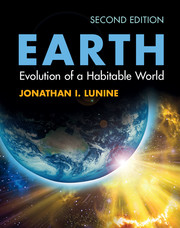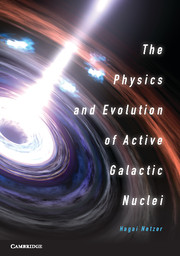Refine listing
Actions for selected content:
16950 results
Chapter VI - Further Properties of Lamé Functions and Application to Gravitation
-
- Book:
- The Stability of Rotating Liquid Masses
- Published online:
- 05 June 2016
- Print publication:
- 20 June 2013, pp 77-90
-
- Chapter
- Export citation
Comet Index
-
- Book:
- The Comets and their Origin
- Published online:
- 05 June 2016
- Print publication:
- 20 June 2013, pp 172-173
-
- Chapter
- Export citation
Preface
-
-
- Book:
- The Stability of Rotating Liquid Masses
- Published online:
- 05 June 2016
- Print publication:
- 20 June 2013, pp vii-viii
-
- Chapter
- Export citation
Chapter IV - The Formation of Tails
-
- Book:
- The Comets and their Origin
- Published online:
- 05 June 2016
- Print publication:
- 20 June 2013, pp 111-149
-
- Chapter
- Export citation
Chapter III - The Origin and Formation of Comets
-
- Book:
- The Comets and their Origin
- Published online:
- 05 June 2016
- Print publication:
- 20 June 2013, pp 62-110
-
- Chapter
- Export citation
List of Plates
-
- Book:
- The Comets and their Origin
- Published online:
- 05 June 2016
- Print publication:
- 20 June 2013, pp ix-x
-
- Chapter
- Export citation
Chapter II - Physical Properties of Comets
-
- Book:
- The Comets and their Origin
- Published online:
- 05 June 2016
- Print publication:
- 20 June 2013, pp 29-61
-
- Chapter
- Export citation
Chapter V - The Relation of the Present Theory to Earlier Ideas
-
- Book:
- The Comets and their Origin
- Published online:
- 05 June 2016
- Print publication:
- 20 June 2013, pp 150-164
-
- Chapter
- Export citation
Appendix
-
- Book:
- The Comets and their Origin
- Published online:
- 05 June 2016
- Print publication:
- 20 June 2013, pp 165-168
-
- Chapter
- Export citation
Preface
-
-
- Book:
- The Comets and their Origin
- Published online:
- 05 June 2016
- Print publication:
- 20 June 2013, pp vii-viii
-
- Chapter
- Export citation
Chapter II - Stability
-
- Book:
- The Stability of Rotating Liquid Masses
- Published online:
- 05 June 2016
- Print publication:
- 20 June 2013, pp 6-30
-
- Chapter
- Export citation

Earth
-
- Published online:
- 05 June 2013
- Print publication:
- 08 April 2013

The Physics and Evolution of Active Galactic Nuclei
-
- Published online:
- 05 June 2013
- Print publication:
- 16 September 2013
References
-
- Book:
- Foundations of Quantum Gravity
- Published online:
- 05 July 2013
- Print publication:
- 16 May 2013, pp 391-396
-
- Chapter
- Export citation
Introduction
-
- Book:
- Foundations of Quantum Gravity
- Published online:
- 05 July 2013
- Print publication:
- 16 May 2013, pp 1-8
-
- Chapter
- Export citation
8 - Cosmology
- from Part II - General relativity
-
- Book:
- Foundations of Quantum Gravity
- Published online:
- 05 July 2013
- Print publication:
- 16 May 2013, pp 309-344
-
- Chapter
- Export citation
Part I - Galilean and special relativity
-
- Book:
- Foundations of Quantum Gravity
- Published online:
- 05 July 2013
- Print publication:
- 16 May 2013, pp 9-10
-
- Chapter
- Export citation
Appendix G - Addendum for Chapter 8
-
- Book:
- Foundations of Quantum Gravity
- Published online:
- 05 July 2013
- Print publication:
- 16 May 2013, pp 389-390
-
- Chapter
- Export citation
Appendix D - Addendum for Chapter 4
-
- Book:
- Foundations of Quantum Gravity
- Published online:
- 05 July 2013
- Print publication:
- 16 May 2013, pp 373-382
-
- Chapter
- Export citation
2 - Quantum mechanics, classical, and special relativity
- from Part I - Galilean and special relativity
-
- Book:
- Foundations of Quantum Gravity
- Published online:
- 05 July 2013
- Print publication:
- 16 May 2013, pp 47-100
-
- Chapter
- Export citation
